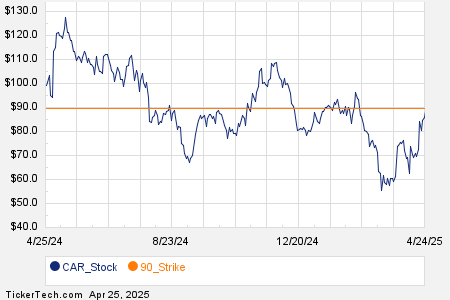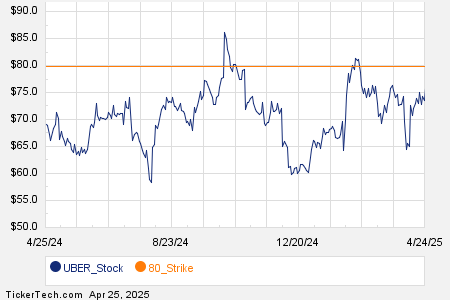
In the past six months, utilities have lagged significantly behind the broader market, leading to a unique buying opportunity. Investors have a chance to add some of the most reliable dividend payers to their portfolio at prices unseen in nearly a decade or longer. Whether a seasoned investor or soon-to-be retiree, capturing solid dividend-paying stocks at compelling dividend yields while setting the stage for potential capital gains can be a strategic move.
While the rest of the market has seen a substantial recovery, the utility sector hit a roadblock in early January. The unexpected surge in market optimism extinguished many buying opportunities, prompting a closer look at individual stocks versus ETFs.
The Nuances of Individual Stocks Vs. ETFs
Unlike ETFs, individual stocks offer the potential to exploit mismatches in market pricing and derive higher yields. A well-diversified portfolio in an ETF may hinder the ability to take advantage of temporary weaknesses in pricing, thus impacting potential upside appreciation.
On the other hand, for hands-off or regular investment adding, an ETF may be a suitable option. However, for the passionate investor eager to capitalize on price mismatches and earn higher yields, individual stocks hold an undeniable allure.
Visualizing the potential, one could opt for the four utilities covered in this analysis, which present a more substantial discount than offered by the XLU ETF.
Fund Holdings & Dividend Yield
The intriguing aspect is that two of the four stocks, NextEra Energy (NEE) and Evergy (EVRG), are held in the XLU ETF. However, XLU, with a dividend yield of 3.39%, pales in comparison to individual companies, particularly Black Hills (BKH), Avista (AVA), and Evergy, all boasting higher dividend yields.
- Black Hills (BKH) – 4.98% Dividend Yield
- NextEra Energy – 3.27% Dividend Yield
- Avista (AVA) – 5.47% Dividend Yield
- Evergy – 5.10% Dividend Yield
Beyond the current dividend yield, assessing the dividend growth rate average, payout ratio, and starting yield becomes crucial in weighing the compelling nature of these stocks. It’s not just about securing a higher dividend, but also ensuring growth and safety.
- XLU – Five-year dividend growth rate of 4.02%
- BKH – Five-year dividend growth rate of 5.31%
- NEE – Five-year dividend growth rate of 11%
- AVA – Five-year dividend growth rate of 4.52%
- EVRG – Five-year dividend growth rate of 7.41%
Despite the notion of slower dividend growth associated with higher payout ratios, the chosen utility stocks present compelling numbers for varied reasons. Comparing seeming disparate dividend yields calls for a closer consideration of the growth potential of each stock.
- NEE – Current Price $57.38/share w/ 11% Dividend Growth and annual dividend payout of $1.87
- AVA – Current Price $34.26/share w/ 4.5% Dividend Growth and annual dividend payout of $1.84
Today’s prices showcase how much time NEE, with its 11% dividend growth rate, would need to challenge the superior yield offered by AVA. This in-depth analysis provides insight into the compelling utility stocks ripe for investment.
Uncovering the Highs and Lows of Utility Investments
Investors in NEE demonstrate their confidence in the company’s growth trajectory, anticipating fruitful returns over time. Conversely, those seeking immediate retirement income may find AVA more appealing due to its higher initial yield, despite offering fewer growth opportunities.
A compelling opportunity presents itself when utility stocks are priced at a discount, significantly reducing the break-even period for dividend growth. For instance, NEE hit its lowest point at $47.15/share in October, indicating a potential break-even period of only six years to reach the same cost basis yield. Although other variables come into play, this underscores the critical role of the entry point, as even robust growth can be overshadowed by an ill-timed investment.
The Underlying Forces Behind the Utility Stock Plunge
The performance of utility company shares is inextricably linked to prevailing interest rates. Low rates benefit utilities by providing access to inexpensive capital, reflected in their lowered cost of capital and enhanced net income. Consequently, utilities can distribute this increased income to shareholders through dividends and share buybacks. Furthermore, with alternative low-yield investment options for savers, such as CDs and treasuries, utility stocks become an attractive prospect for generating stable cash flow during retirement.
As a result of these forces, utility stock prices have soared, driven by heightened investment demand, leading to a significant decline in current yields compared to historical yields. Notably, in times of increasing rates, utility companies face heightened financial strain, compelling them to curtail expenses or forgo growth initiatives. Consequently, investors seeking secure yields tend to pivot towards capital-protected investments, triggering additional downward pressure on stock prices.
Navigating the Influence of the Federal Reserve’s Policy on Utility Stocks
The Federal Reserve’s stance on interest rates holds considerable sway over the utility stock market. Speculations about potential rate adjustments play a pivotal role in impacting investor sentiment. However, excessive optimism regarding rapid rate decreases has the potential to fuel a second downturn in utility share prices, as the market grapples with the reality of prolonged higher rates.
Deciphering the Path Ahead – A Matter of Perspective and Objectives
In a scenario where higher interest rates persist, utility companies need to reflect the increased risk in their yields to remain attractive to investors who can procure comparable yields from less volatile income-producing assets. Therefore, the decision to invest in a utility stock, such as AVA with a 5.4% yield, over a certificate of deposit offering 5% hinges on evaluating the additional 40 basis points of yield against the potential downside risk.
There’s also the consideration of timing one’s investment in AVA, weighing the current 5.4% yield against the prospect of acquiring shares at 5.8% or 6.0%. The historical dividend yield of AVA, which exceeded 6% in the mid-1980s and surged to 10.5% in the late 1980s, offers insight into how changing interest rate expectations can shape utility stock prices and yields.
Evaluating the price points for utility stocks, such as BKH, reveals the
Assessing the Utility Stock Landscape: Identifying Optimal Investment Entry Points
The utility stocks landscape offers a concentrated range of dividend yields, presenting a historical high of 6% and a low of 3% over the long run. Amid this backdrop, there have been distinctive movements in the utility market, drawing attention to potential buying points for investors. Let’s analyze the investment prospects for the stocks under consideration.
Assessing BKH
BKH boasts a comprehensive 52-year track record of dividend increases, signifying an attractive level of consistency for investors. With a more reasonable payout ratio and a dividend yield trending towards the higher-end of its historical range, BKH stands out as a compelling investment opportunity. A potential strong buying point for BKH is identified at $50 per share, underpinning the company’s investment appeal.
Evaluating NEE
Although NEE has been recognized as a dividend growth machine, concerns arise from the cost of capital, a slowdown in earnings, and an above-average PE valuation. Notably, NEE holds the unenviable position of being the top underperformer among the four companies being compared. A favorable buying point for NEE is projected at $47 per share, marking a justifiable PE ratio and a dividend yield positioned at the higher end of historical levels.
Scoping Out AVA
AVA has experienced a considerable deceleration in dividend growth, attributed to a higher payout ratio. Despite projections of earnings growth in 2024, AVA has exhibited erratic fluctuations in its yield during its tenure as a publicly-traded entity. For potential investors, a strong buying point for AVA is suggested to be below $31 per share, aligning with a minimum desirable yield of 6% in the current rate environment.
Delving into EVRG
EVRG presents an intriguing case, with recent analyst calls touting the stock’s attractiveness at current prices. Although historical dividend yield data is limited, EVRG’s pursuit of regulatory success and investment in infrastructure augurs well for its dividend growth and payout ratio. A compelling entry point for EVRG is estimated at a share price under $47, correlating with a 5.5% yield, a level deemed reasonable given recent market dynamics.
Assessing the Landscape
Upon considering broader market dynamics, there is an indication that further downside may be necessary before utilities reach an attractive valuation. BKH and EVRG emerge as the prominent utilities that appear to be within reach for potential investment. Surprisingly, NEE lags behind, contrary to its status as a favorite among analysts in 2024. The recently released earnings report, despite showing a year-over-year income decline, still forecasts robust EPS growth through 2026, suggesting limited potential for an upward adjustment in the price target for the stock.
For investors seeking consistent value and compelling yields, BKH is deemed the top pick, followed by EVRG, AVA, and finally, NEE.
Notably, retirees John and Jane hold positions in NEE and AVA, with intentions to potentially add BKH to their investment portfolio.



